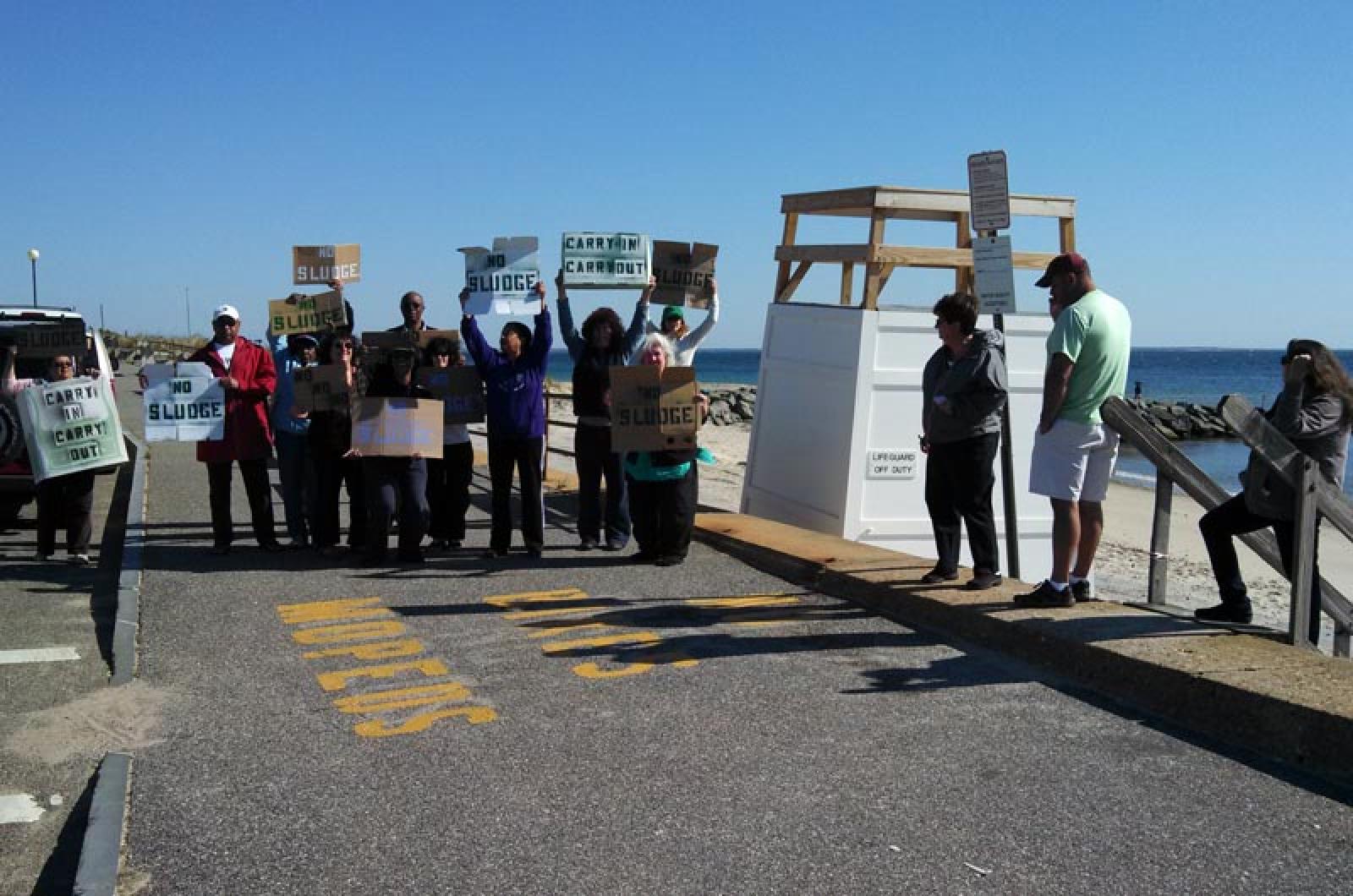The town of Oak Bluffs is taking steps to remove dredge spoils from Inkwell Beach this week, following an outpouring of criticism about the quality of the sediment deposited there this spring.
Selectmen made the announcement at the beginning of a special meeting Tuesday evening.
“We are going to, as soon as we can arrange for it, pile the sand up from the town beach and Inkwell beach and put it into a pile and the highway is going to truck it to another location,” said board chairman Gregory Coogan.
The announcement was greeted with applause from the roughly 60 people gathered at the meeting. Some identified themselves as part of a group that gathered at Inkwell Beach Monday morning with signs to protest the dumping of dredge material at the beach. Selectmen did not indicate how or when they had arrived at the decision to remove the sand, nor was the item posted on the meeting agenda.
Conservation agent Elizabeth Durkee, who accepted the sand on behalf of the town as part of a beach nourishment project, maintained that the sand was safe and had been vetted by the department of environmental protection. She listed the various chemicals it had been tested for, and assured the audience that it was safe.
“The reason the sand is being removed is for aesthetic reasons,” Mrs. Durkee said. “It passed all the state criteria for cleanliness in the dozens of tests that it had.” Shellfish constable David Grunden said he’d like to have a list of sand qualifications for the future.
“Apparently people want us to go above and beyond the state requirements,” he said. “I would like to see listing for that so that we know what people want.” Mr. Grunden said the process of sand nourishment protects Beach Road from erosion. The mining of sand offshore is prohibited in Massachusetts, and Mr. Grunden has said in the past that finding suitable sources of sediment is a challenge.
Town administrator Robert L. Whritenour reiterated a commitment to the nourishment program, but said that though the dredge spoils did not present a public health risk, they were not compatible with town beaches.
“The big takeaway is that no one’s health is threatened by that material, although when you look at it and smell it you would assume it was highly dangerous,” Mr. Whritenour said. He said the town would work to get a state permit for offshore dredging. “Moving forward, we are going to continue to work with the state and the town to get the cleanest, best sand,” the town administrator said.
Highway superintendent Richard Combra Jr. said in retrospect, the sand probably shouldn’t have been brought to the beach.“I want to let everybody know that it was just a mistake and we are going to rectify it,” he said. He also said there was nothing “shady” about the way the sand was brought to the beach. “I want everybody to understand, when we brought that sand there, we did it with the best intentions,” Mr. Combra said.
When selectmen moved into executive session about an unrelated matter, planning board member Ewell Hopkins facilitated an impromptu meeting of the residents.
The first topic of discussion was sand.
“That product is as toxic as it can possibly be,” said resident Kerry Scott. Steve Auerbach questioned her claim.
“I find it hard to believe that Ms. Durkee and Dave Grunden and Richie Combra would dump toxic sand on our beach,” he said. “Their intentions are always for the good of the town.”
Mr. Hopkins said his takeaway was that the town boards needed to communicate better. “It is clear we did not do enough internal communication,” he said.
Residents then voiced a laundry list of other issues with the town beach, including the unevenness of sand cover between the beaches that straddle the jetty, and gaps in the metal railings along Beach Road. The railings were repaired Tuesday, according to parks commissioner Amy Billings. John Kelly said he worried about the condition of the walkway down to the beach.
“It’s a lawsuit waiting to happen,” he said.







Comments (1)
Comments
Comment policy »